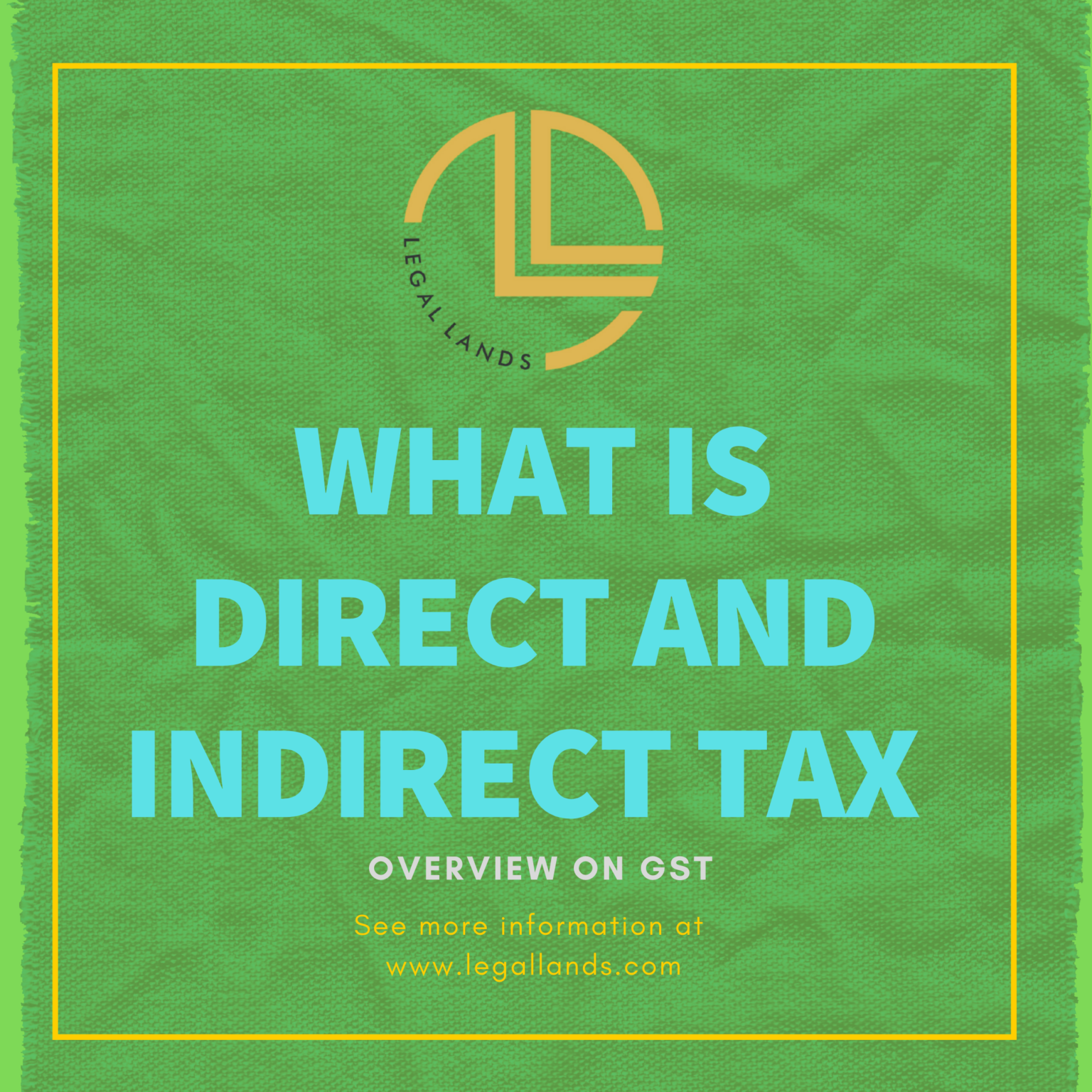A direct tax is one that the taxpayer pays directly to the government. These taxes cannot be shifted to any other person or group. An indirect tax is one that can be passed on-or shifted-to another person or group by the person or business that owes it.
Taxes can be either direct or indirect. A direct tax is one that the taxpayer pays directly to the government. These taxes cannot be shifted to any other person or group. An indirect tax is one that can be passed on-or shifted-to another person or group by the person or business that owes it.Show 102550100 entriesSearch:
| Direct Tax | Indirect Tax |
|---|
| Direct Tax is Tax on income or profits. | Indirect Tax is the tax on goods and services. |
| The Levy and Burden of Direct Tax would be on the Same person. i.e. Individuals who earned income | The Levy and Burden of Indirect Tax would be on the Different persons i.e. Indirect Tax would levy on Manufacturers/Service Providers and borne by end consumer of service/goods. |
| Example of Direct Tax is Income Tax, Gift Tax, Wealth Tax, corporate tax. | Example of Indirect Tax is Goods & Service Tax and Customs Duty. |
| Direct Tax is progressive in Nature. It is difficult to collect Direct taxes. | Indirect Tax is regressive in Nature. It is easy to collect Indirect Taxes. |
Showing 1 to 6 of 6 entriesPreviousNext
Overview on Goods and Service Tax(i.e. GST)
Goods and Services Tax, GST is an indirect tax for the entire nation, which makes India a common united market by ensuring indirect taxes are replaced in the country. Passed in Parliament on March 29, 2017, the Goods and Services Tax Act is a comprehensive and multi-stage tax levied on every value addition. The GST Act came into effect on 1st July 2017 and holds great significance as both the Central and State governments rely on the GST for their indirect tax revenue.
Goods and Services Tax – a comprehensive tax regime to be levied on manufacture, sale, and consumption of goods /services.
GST is a destination-based tax. Hence, the levy of tax burden shifts from production to consumption whereby imports would be levied to tax and exports would be exempted from the burden of GST.
The final consumer will bear only the GST charged by the last dealer in the supply chain, with set-off benefits at all the previous stages.
GST is one of the widely accepted indirect taxation systems prevalent in more than 150 countries across the globe. Globally, GST has been structured as a destination based comprehensive tax levied at a specified rate on the sale and consumption of goods and services within a country.
Hence, GST is a tax on goods and services with a comprehensive and continuous chain of set-off benefits from the producer’s point and service provider’s point up to the retailer’s level. It is essentially a tax only on value addition at each stage, and a supplier at each stage is permitted to set-off, through a tax credit mechanism, the GST paid on the purchase of goods and services as available for set-off on the GST to be paid on the supply of goods and services. The final consumer will thus bear only the GST charged by the last dealer in the supply chain, with set-off benefits at all the previous stages.
However, GST is not levied on Diesel, Crude oil, Petrol, Natural Gas, Aviation Turbine Fuel, and Liquor.
There are four types of GST as given below-
1. Central Goods and Services Tax (CGST) – CGST is imposed by the Central Government on Intra State supply of goods and services. CGST has subsumed other Central taxes like Service Tax, Excise Duty inclusive of State Tax, CST, SAD, etc.
2. State goods and Services Tax (SGST) – SGST is imposed by the State Government on Intra State supply of goods and services. SGST has subsumed state tax that includes Sales Tax, Entertainment Tax, VAT, Entry Tax, etc.
3. Union Territory Goods and Services Tax (UTGST) – UTGST applicable on the Intra Union Territory supply of goods and services. The UTGST is applicable to Union Territories namely Lakshadweep, Daman and Diu, Dadra and Nagar Haveli, Andaman and Nicobar, and Chandigarh on intra-union territory supply of goods or services or both.
4. Integrated Goods and Services Tax (IGST) –IGST applicable inter-state supply of goods or services or both. In case of import of goods also, the present levy of countervailing duty (CVD) and Special Additional Duty (SAD) would be replaced by the integrated tax. The IGST is levied when the movement of products and services occurs from one state to another.
Benefits of Introduction of GST
• One nation one tax
• GST eradicates the cascading tax effects.
• High threshold for Compulsory registration under GST.
• Lesser and easy compliances than former laws.
• Composition Scheme for Small businesses.
Slab Rate of GST
There are four types of GST Slab Rates (i.e. 5%, 12%, 18%, and 28%) under GST law. The goods and services on which GST levied shall be divided into these four GST Slab rates. However, the GST council may amend inclusions of goods and services under each slab from time to time in order to ensure efficient pricing of different categories of products.
Contact the Best Direct & indirect Tax Immigration Law, Company incorporation & E-Residency in Estonia. ADR Law firm in Delhi today, LEGALLANDS LLP will help you with all the matters relating to FEMA, FDI, ADR, Corporate & Commercial, Family Law, IPR, International Trade & Tax, Other Advisory Services, and Business Setup advisory in India and Abroad. Contact today at +91 11 46045777 or connect@legallands.com






